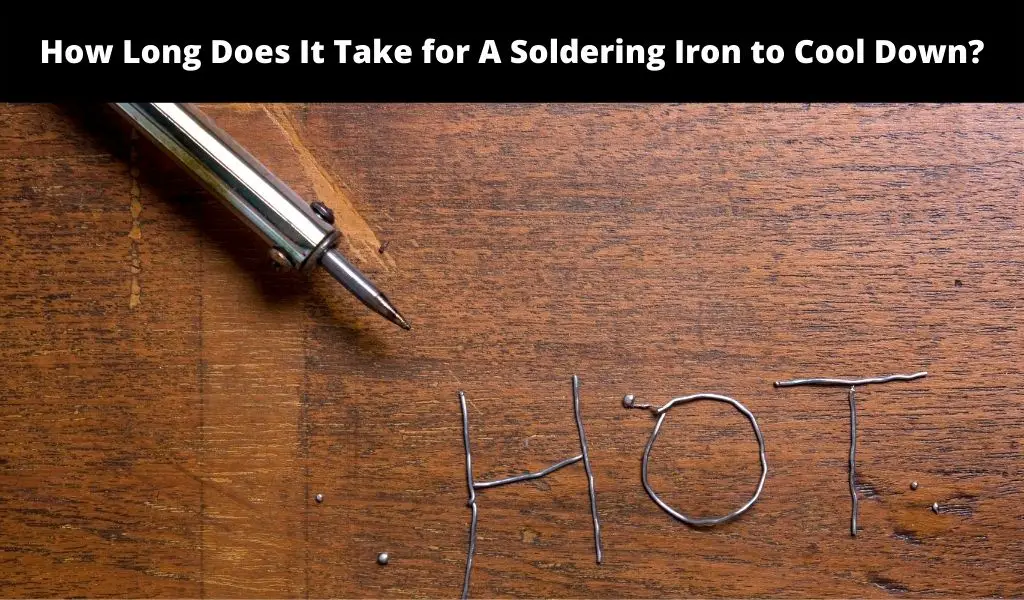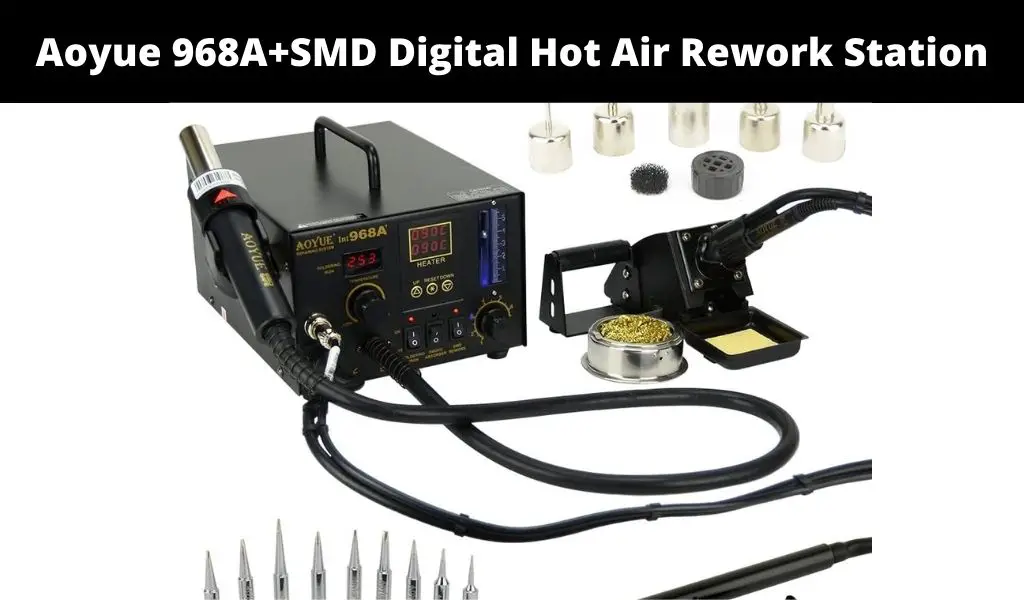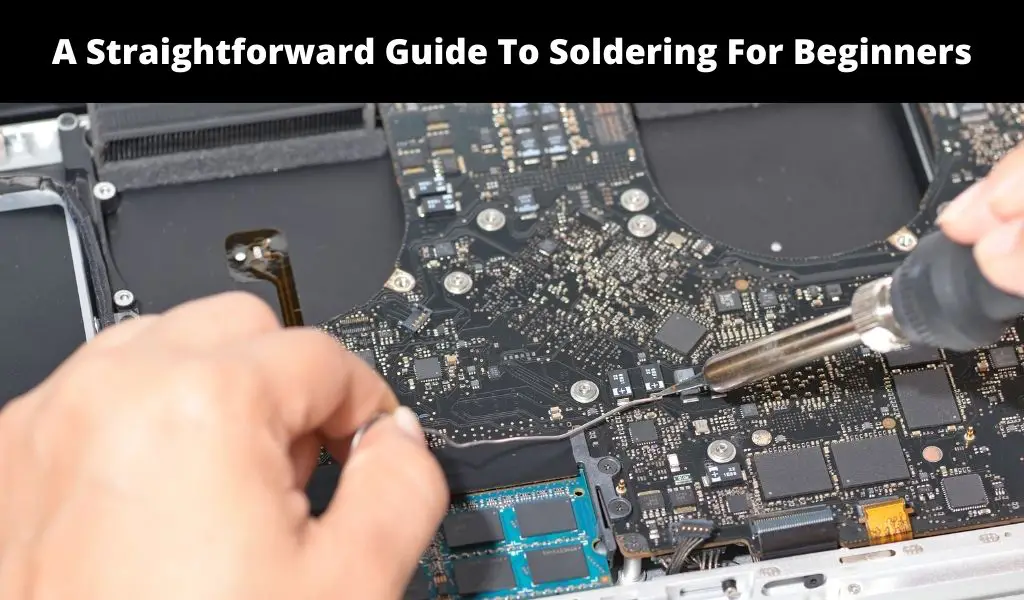Whether one is working on a soldering project and needs to change tips or is finishing up and needs to let the tips cool before storing their tool, the question arises, how long does it take for a soldering iron to cool down? This question has multiple possible scenarios and just as many answers.
How Long Does It Take for A Soldering Iron to Cool Down?
Here are some of the different situations and their corresponding solutions to help answer the cooling question with regards to soldering irons.
Style Makes a Difference
When considering the cooling time of a soldering iron, the first thing to think about is the style of the device you are using. The size and type of tip you are utilizing will determine the overall time it takes for the tips and tools to cool off.
- Soldering Iron Styles
Each of these tool options offers differing heat levels and heat styles, which will, in turn, change the total time it takes for the soldering irons themselves to cool down. While most of the devices will be cool enough within two to three minutes, to not start a fire, it is recommended that you wait at least thirty minutes before storing tools in an enclosed space.
Always check and make sure that all the parts have cooled before storing them in this manner. Most of these devices have stands that make cooling easy and allow users to avoid burns on surfaces during the cool-down process.
If the need for a cool soldering iron is to change tips for utilizing another style or size, the time will depend on not only the soldering iron itself but also the tip that is currently in use. Tips range in size and style from very fine for small delicate projects like circuit boards to broader tips for cables and wires.
The thicker the tip is, the longer it will take for it to cool down completely. There are some other recommendations though for changing tips during work, without having to wait.
Recommendations For Changing Hot Tips
There are some occasions in which one might need to change a tip during a project. The problem arises when the current tip is too hot to handle. So, how can you continue to work when the tip is too hot to remove? Here are some recommendations:
Remove With Pliers
Hot tips can easily be removed with a pair of pliers. To do this, make sure that you have someplace to put the hot tip that will not burn while it is still cooling. Many stands have holders or cups to hold these hot tips safely. If yours does not, find a container that holds up to the heat.
The first step to changing the tip will be to turn the soldering iron off. Once it is powered off, using the pliers, unscrew the current tip sheath, and release it into the stand. Carefully remove the tip and place it into the cooling container. Use caution that it does not touch any heat sensitive surfaces as it will be extremely hot.
Now you are ready to insert the new tip. It is a good idea to use the pliers for this portion as well because you will need to reattach the sheath, and it will probably still be hot. Once you have the tip in place slide it inside the sheath that is in the stand and twist to start the threading. Tighten the sheath the rest of the way using the pliers. Now you are ready to continue with your work.
Heat Resistant Gloves
Another popular option for changing out hot tips during projects is with heat resistant gloves.
Double-check the heat compacity of your soldering iron and make sure the heat resistance of the gloves is at least one hundred degrees higher for safety purposes. With these gloves, you will be able to simply remove the hot tip and place it into a container for cooling. Replace with the desired tip, allow the new tip to warm to the proper temperature, and get back to work.
Ideas for When More Than One Tips is Needed
When you go into a project knowing that you will need different tips to complete the job, some solderers like to use multiple devices. Now, this is not an optimal idea for the occasional do-it-yourselfer, but if you do quite a bit of soldering, this might provide a solution. One way to accomplish this is to buy several different soldering irons, which with the generally low cost of some of the most basic devices, is not too taxing on the pocketbook.
Another option that provides multiple tip availability is by using a soldering system that offers several different handpieces. Soldering systems come with a higher price tag than some other devices, but if you are an avid solderer, the extra equipment and workability will more than makeup for the additional price.
Some systems come with extra attachments for tips, while others have multiple handpieces as well as hot air gun attachments. Finding the right system will eliminate the need to wait for the tips to cool off to change them and allows for continual work.
What Not to Do for Replacing Hot Tips
Now that you know a bit about cooling times and how to change hot tips on a soldering iron, it is essential to cover a couple of things that should never be tried for cooling down tips or devices. Utilizing these techniques for cooling down your soldering iron could result in harm to yourself or the soldering iron and tips.
The first no-no when it comes to cooling down soldering iron tips is placing them in water. There are several factors that make this is a bad idea. First, if the soldering iron is still plugged in, you risk electrical shock. Next, the extreme heat of the tips being rapidly reduced by the water can cause cracks in the outer protective layer on the tip.
These outer layers are generally made of iron, which protects an inside copper core. The copper core allows for rapid heating and consistent heating throughout use while the iron coating protects the copper core from rapid deterioration and the need for frequent replacements.
When the outer layer becomes cracked it allows the flux to contact the inner copper layer and begins the corrosion of the copper. Finally, among these other reasons is that when you introduce the extreme heat of the soldering iron into the water the bubbles and resulting evaporation may cause burns to the user.
The other no-no for cooling down a soldering iron is the use of fans. While fans may not cause the type of damage water will to the hot tips, they still cause rapid cooling, and this action often results in cracked tips and again frequent purchases of replacement tips.
Patience is Key
When it comes to cooling down a soldering iron, patience is definitely best. Waiting two to three minutes will ensure that the soldering iron will not start a fire. Adding another thirty minutes or so will ensure that storing the soldering iron in an enclosed space is safe.
If tip changes are needed and waiting is not an option, utilizing pliers or heat resistant gloves may provide an instant solution. Finally, taking proper security precautions when working with soldering irons will keep you safe and prolong the life of your soldering iron and its tips.
Avoiding things like water immersion and fan cooling will also extend the life of your tool and accessories, giving you a device that will work for many more projects in the future.






